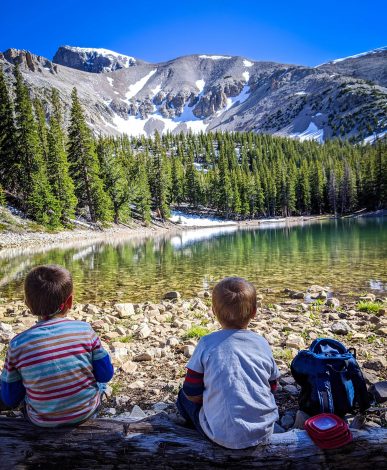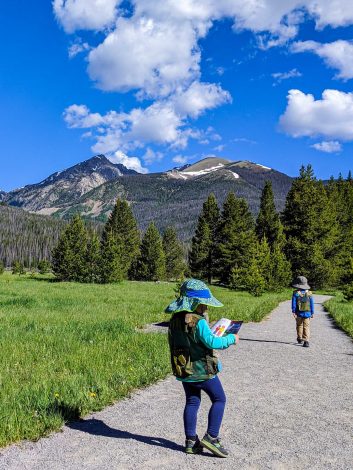Tips and Information for Visiting a National Park During COVID-19
COVID-19 quickly ushered in several changes to our daily lives. And now that things are opening back up we all are accustomed to seeing ground markers to help us maintain a six-foot distance, mask requirements, hand sanitizing stations, plastic barriers between staff and patrons, closed businesses, and more. Complying with CDC safety guidelines in the time of COVID-19 is virtually everywhere. This also includes the National Park System. As we all flock to the great outdoors this summer, especially our gorgeous national parks, it is important to take note of the changes you may see. Each park is different, so this list may not apply to all. 
Closed Visitor Centers
Visitor centers are a great place to get the low-down of the park. You can speak to Rangers, often view museum displays, grab Junior Ranger books and maps, purchase gifts, and so much more. Unfortunately, the phased reopening process for national parks does not include many visitor centers. For instance, Arches National Park set up a makeshift storefront outside their visitor center. You can collect maps, some gifts, and Junior Ranger books, but there are not Rangers regularly on hand to answer questions. On the other hand, Capitol Reef National Park’s visitor center is open, but only to talk to a Ranger or to browse the store. All displays are closed.
New Day-Use Vehicle Reservations
Many people like to pop in and out of the park while they explore the area. To decrease crowds, however, some of the more popular parks are using a reservation system. This means you have to be really on top of your plans to get into the park on the day and time you want. For example, Rocky Mountain National Park has a small number of reservations they release a mere two days before the day and time of the reservation. So if you spend a week in the area, you may only be able to secure a reservation to enter the park by vehicle once.
Closed Campgrounds
Many people enjoy national parks for days at a time and want to spend their nights immersed in the beauty of the national parks via their campgrounds. Sadly, some national parks did not open their campgrounds with the reopening of the park itself. Acadia and Rocky Mountain National Parks will not open their campgrounds until late summer 2020 (if all goes as planned), while Capitol Reef National Park’s campground has opened.
Changes to the Junior Ranger Program
In the past, many children entered visitor centers, grabbed their Junior Ranger booklets, explored the park, and then returned to a visitor center to be sworn in by a Ranger. To keep interactions between park staff and visitors at a minimum, many national parks are now handing out the coveted Junior Ranger badges with the booklets. Some parks, like Capitol Reef National Park, are still going about it the pre-COVID-19 way. Children bring their completed books back, speak with a Ranger, and are sworn in as Junior Rangers. Only now there is a plastic barrier up and the Ranger keeps their distance by not going through the booklets to ensure completion.
Closed or Limited Entry to Services and Popular Destinations
Some parks have buildings, caves, buses, climbing hot spots, and other popular destinations that are huge draws to that national park. To help visitors maintain social distancing and comply with CDC guidelines, many of these must-see spots are currently unavailable. For instance, Lehman Caves in Great Basin National Park are closed because they are a small enclosed space. At Grand Canyon National Park, they are not running their shuttle buses and closed the Desert View Area and Watchtower because of COVID-19 concerns.
While this is not an exhaustive list, it does give you an idea of what to expect while traveling to national parks this summer and likely beyond. Things are changing quickly, but the National Park Service is really wonderful at ensuring current information is available on all park websites. Check under the red alerts to see the current reopening news.
About Hike it Baby
Related Content






Comments